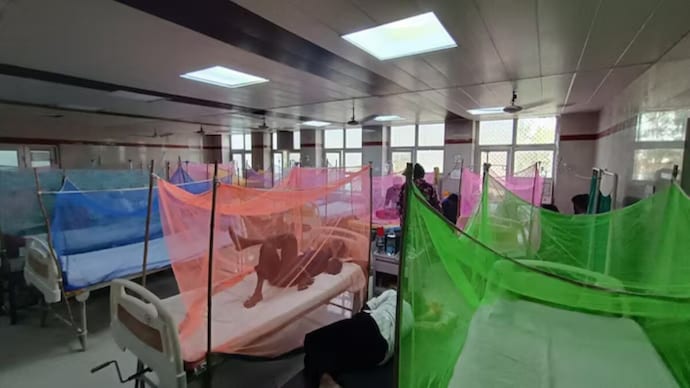
Dengue fear grips India as receding flood water may act as a catalyst
As flood water receded in the national capital and parts of states such as Himachal Pradesh, Punjab, Uttarakhand, Haryana, and Assam, the cases of vector-borne diseases have witnessed a spike.

By Samrat Sharma: Parts of Delhi, Himachal Pradesh, Punjab, Uttarakhand, Haryana, and Assam were ravaged by floods this year. Though water levels in the rivers receded over time, they led to other problems. Various diseases such as conjunctivitis (eye flu) and dengue have been on the rise. While conjunctivitis is being seen as a short-term problem, the severe rise in dengue cases has kept administrations on their feet.
- Surging dengue cases spurred protests in West Bengal
- Dengue cases in Delhi at five-year high
- Karnataka reported over 4,500 cases between January and July 2023
- Dengue larvae were found in over 1,000 houses in Haryana’s Karnal district
“When an area becomes flooded, the populations and territories of many vectors, especially mosquitoes, may initially vanish, but when the water subdues after rainfall, they return to these areas as receding flood water can provide ideal breeding sites for them,” noted a 2023 study published by the Cambridge University Press.
While the peak season of dengue — September and October — is yet to arrive, the concern this year is more due to a record number of cases recorded last year. About 2.3 lakh dengue cases were recorded in India in 2022, much more than the sum of all dengue cases reported in 13 years between 2000 and 2012.
At 67,271 cases, West Bengal accounted for a maximum of 29 per cent of India’s dengue cases last year. Going by the trend for the past six years as well, the state witnessed the highest number of dengue cases — 13 per cent of pan-India cases.
Why West Bengal?
To examine the disease’s prevalence in West Bengal, one has to divide the state into two regions: the Sub-Himalayan area and the Gangetic Plain. According to a 10-year study, only 10 outbreaks were reported from the former while 85 outbreaks were reported from the latter.
This phenomenon, the study titled “Dynamics of dengue outbreaks in Gangetic West Bengal” noted, may be attributed to the greater density of population as well as the greater density of responsible vectors “due to more favourable mosquito genic conditions in the Gangetic plains than the Himalayan foothills”. Additional factors included more industrialisation, urbanisation and unplanned settlements.
Surge of Dengue in India
Dengue has increased steadily in the past half-century as a result of various factors, including global trade and travel, urbanisation, population growth, and climate variability and change, all of which provide conducive conditions for dengue vectors and viruses to multiply.
“Between 1951-60 and 2012-21, the number of months appropriate for A aegypti dengue transmission in India increased by 1·69 per cent every year to 5.6 months,” showed a 2023 report published in The Lancet.
Meanwhile, the government has raised concern over the small number of entomologists — people who study insects and their relationship to humans, the environment, and other organisms — in India. As a result, the Indian Council of Medical Research has planned to train 100 entomologists in a year to battle vector-borne diseases such as dengue, malaria, chikungunya, zika, and lymphatic filariasis.

